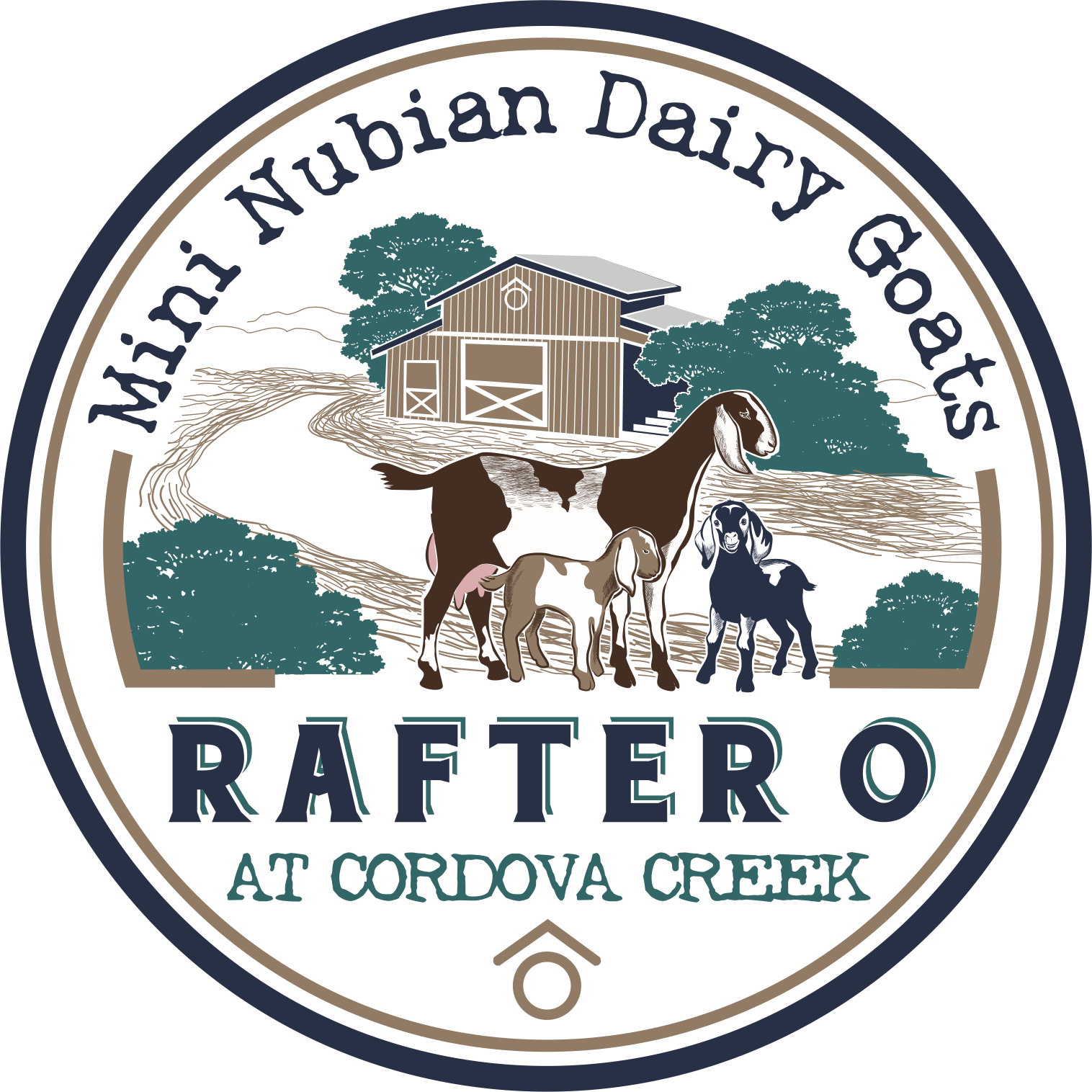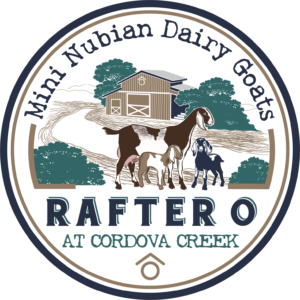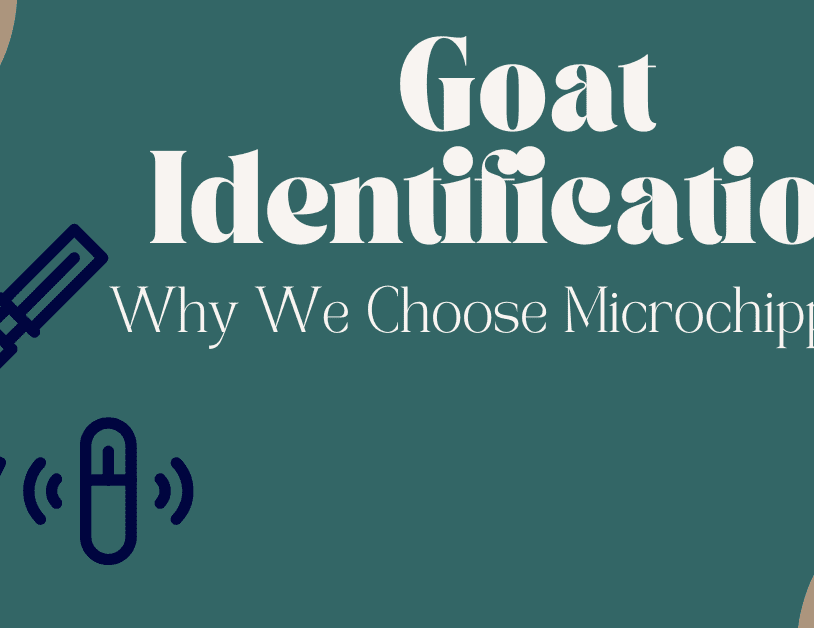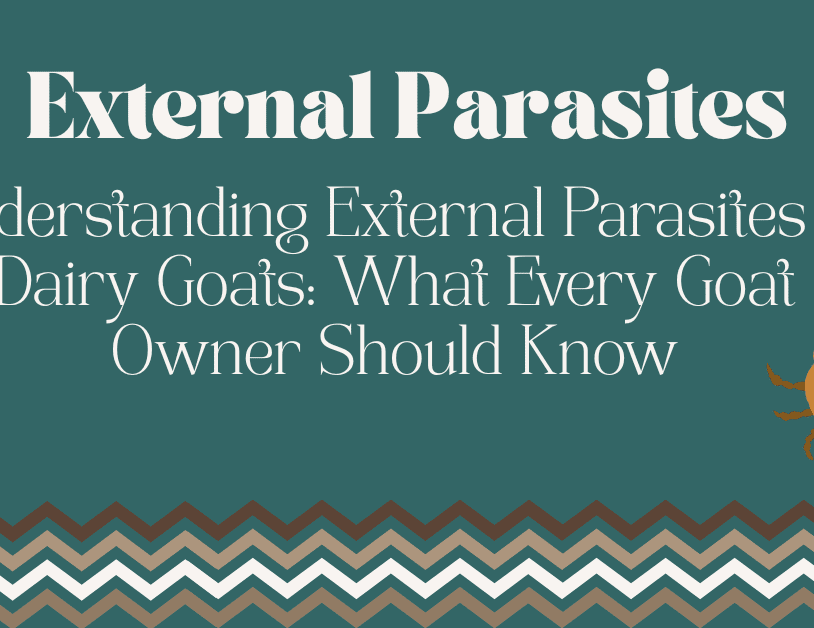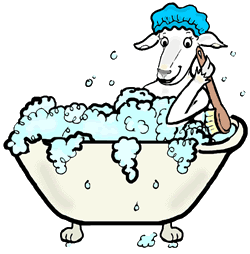
If you’ve spent any time in the goat world, you’ve probably heard people refer to their herds as “clean.” But what does that actually mean? The truth is, “clean herd” can mean different things to different breeders. At Rafter O Mini Nubians, we believe transparency and consistent testing are key when it comes to herd health.
What Is a “Clean” Herd?
At Rafter O, we define a “clean” herd as one that is regularly tested and confirmed negative for major diseases that affect goats and can, in some cases, impact humans as well. Our herd is tested annually for:
- Caprine Arthritis Encephalitis (CAE)
- Caseous Lymphadenitis (CL)
- Johne’s Disease
- Q Fever
We also test every three years for Brucellosis. As of our latest results, our entire herd is negative for all of these diseases.
Because we raise Mini Nubians, we also test for G6S (Glycosaminoglycan Storage Disease). Every goat in our herd is either tested clear or is “normal by parentage.”
Our Biosecurity Commitment
Although our herd isn’t fully closed—we do attend MDGA shows and occasionally bring in new goats—we take biosecurity very seriously. Any new additions to our herd come from other tested-negative herds or are individually tested before stepping hoof on our property.
When we attend shows, we minimize exposure to other animals by showing out of our trailer or keeping our goats penned away from others as much as possible.
Why It Matters
Bringing in just one infected animal can devastate your entire herd. Diseases like CAE or Johne’s can spread silently, and once they’re in, it’s incredibly difficult (and sometimes impossible) to eliminate them. In the case of Q Fever, there’s also a zoonotic risk—meaning these diseases can spread to people.
It’s just not worth the risk. Protect your herd and your family by only buying from herds that test every animal and are transparent about their results.
Access to Test Results
At Rafter O Mini Nubians, we believe in transparency when it comes to the health of our herd. To protect against scammers who may attempt to misuse our documentation, we keep our official test results password protected on our website.
All buyers receive the password to view and verify our testing records, and we’re happy to share this information with prospective buyers upon request. If you’re considering a Rafter O goat and would like to see our test results, just reach out—we’re proud of our clean herd and happy to provide the proof.

Our Testing Process: Labs We Trust and Why It’s Worth It
At Rafter O Mini Nubians, we take testing seriously—and that means choosing labs we trust. We primarily use UBRL (Universal Biomedical Research Laboratory) and WADDL (Washington Animal Disease Diagnostic Laboratory) for both disease and pregnancy testing.
UBRL offers a convenient Biosecurity Panel that includes testing for CAE, CL, and Johne’s, and we choose to add Q Fever to every panel. As of now, the cost per goat for this panel is $31.50, with an option to add a pregnancy test for just $6.00 more. While testing every goat every other year does come with a price tag, we firmly believe it’s a small cost for the peace of mind and long-term health of our herd.
To help manage expenses, we coordinate with another local goat farm and combine our samples to save on shipping each year. UBRL is a certified lab with a strong reputation and top-notch customer service—we highly recommend them to fellow breeders.
Now, without further ado… let’s talk more about the diseases we test for and why they matter.
Caprine Arthritis Encephalitis
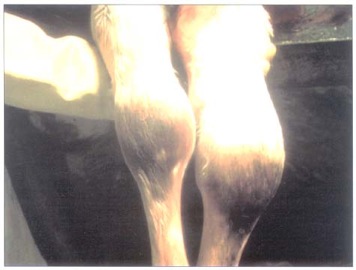
CAE (Caprine Arthritis Encephalitis Virus) is a persistent lentivirus infection of goats. Polyarthritis is the main clinical sign of CAE infection. There are four forms of CAE: a central nervous system form that affects kids, the arthritic form that affects adults, a pneumonia form, and a mastitic form. Most CAE-infected goats show no clinical disease but remain persistent virus carriers. The major mode of viral transmission is vertically through milk and colostrum. Respiratory secretions and feces also harbor the infectious virus. Good management practices, supported by a reliable diagnostic tool, are the best means of controlling the spread of disease.
UBRL Livestock Diagnostics offers a competitive enzyme-linked immunosorbent assay (cELISA) licensed to detect antibodies to caprine CAE in goat sera. This ELISA test utilizes a proprietary xeno-monoclonal antibody derived by fusion of goat splenocytes and mouse myeloma cells which has excellent characteristics for use in cELISA. This ELISA is USDA approved.
Caseous Lymphadenitis
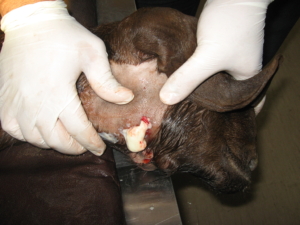
Caseous lymphadenitis (CL) in Goat and Sheep is a chronic, contagious disease caused by Corynebacterium pseudotuberculosis. The disease is characterized by abscess formation in or near major peripheral lymph nodes (external form) or within internal organs and lymph nodes (internal form). Although both the external and internal forms of CL occur in sheep and goats, the external form is more common in goats, and the internal form is more common in sheep. CL is not considered a “curable” disease. Economic losses from CL include death, condemnation, and trim of infected carcasses, hide and wool loss, loss of sales for breeding animals, and premature culling of affected animals from the herd or flock. Because of its zoonotic potential, care should be taken when handling infected animals or purulent exudate from active, draining lesions. C.pseudotuberculosis can survive in the environment for several months and is highly infectious. The herd should be monitored by routine testing as the infected animals may not show visible or obvious clinical symptoms.
UBRL Livestock Diagnostics’ CL test uses an enzyme-linked immunosorbent assay (ELISA) for the detection of IgG antibodies specific for the causative agent of caseous lymphadenitis (CL) in sheep or goat sera.
Johne’s Disease

Johne’s disease is a slow, progressive, contagious, and untreatable bacterial disease that ordinarily infects Cattle, Goats, and Sheep. Infected animals maintain a normal temperature but exhibit weight loss and diarrhea. In the later stages of the infection, animals can become weak, and death may occur in some infected animals.
UBRL Livestock Diagnostics offers the Johne’s Disease ELISA (enzyme-linked immunoassay) Test, which is a highly specific and effective method for producers and veterinarians to detect and control Johne’s disease. This test method is a quantitative USDA-approved ELISA designed to detect the presence of antibodies to Mycobacterium paratuberculosis in Blood.
Q Fever
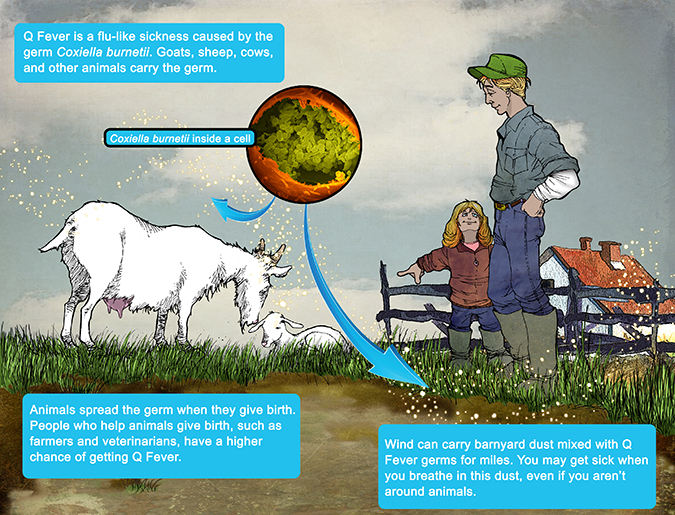
Q fever is caused by Coxiella burnetii and is considered a zoonotic bacterial infection. The infection is usually subclinical but can cause anorexia and late abortion. Q Fever is found in most places worldwide. It is spread mostly through ectoparasites (E.g., Ticks) and at parturition by inhalation, ingestion, or direct contact with birth fluids or the placenta. The organism is also shed in milk, urine, and feces.
UBRL Livestock Diagnostics Q Fever test uses an enzyme-linked immunosorbent assay (ELISA) to detect antibodies against Coxiella burnetii in the blood sample.
While most farms do not test for Q fever, we feel that it is very important to do so since we drink the goat milk raw. This is a very zoonotic disease (meaning people can get it) that you don’t want on your farm! Check out this link to the CDC Q Fever Info Page for more info.
Brucellosis

Brucellosis is a bacterial disease of mammals that can affect goats causing abortions in does and inflammation of testicles in bucks. While Brucellosis in goats is usually caused by Brucella melitensis, they can also be infected with Brucella abortus which is the brucella of cattle. Historically, the number of Brucella melitensis abortions has been extremely low in North America, but more recently, sporadic outbreaks have been reported in goats in Texas and Colorado. Brucella abortus is rare in the US. If Brucella enters a herd there is usually an abortion storm. Brucellosis is an important zoonotic disease known as Malta fever, Bang’s disease, or undulant fever in humans. Flu-like symptoms and high fever are the signs in humans.
WADDL offers Brucellosis testing by the detection of antibodies to Brucella abortus, Brucella suis and Brucella melitensis, causative agents of brucellosis, by card agglutination test method.
Like Q fever, Brucellosis is a disease that can infect people and cause serious illness. For more information, check out this link to the CDC Brucellosis Info Page.
G6S
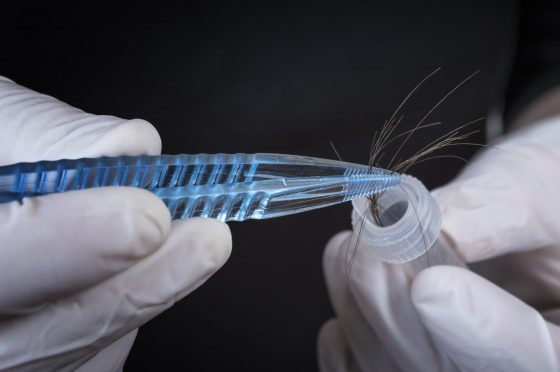
Caprine Mucopolysaccharidosis IIID (MPS IIID) – G6S Deficiency in Goats
Caprine MPS IIID is a lysosomal storage disorder caused by a genetic mutation in the G6S gene (N-acetylglucosamine-6-sulfatase). This point mutation results in a non-functional enzyme, impairing the body’s ability to break down certain complex carbohydrates. The undigested materials accumulate within cells—especially in the brain and nervous system—causing progressive neurological damage.
Nubian goats and their crossbreed (like Mini Nubians) are particularly tested for G6S deficiency because the mutation has been traced back to this breed. The condition is known to be more prevalent in Nubians due to the presence of carrier animals within certain bloodlines. While the disease itself is rare, the carrier frequency can be relatively high, especially in populations where testing hasn’t been routinely performed.
Since G6S deficiency is inherited in an autosomal recessive pattern, animals must inherit two defective copies of the gene to be affected. DNA testing is currently the only method to identify carriers and affected individuals, making it an essential tool for responsible breeding and herd health management.
Understanding DNA Test Results:
✅ Normal (N/N)
- The goat has two copies of the normal gene
- Not affected and not a carrier
- Can safely be bred; all offspring will inherit at least one normal copy of the gene
⚠️ Carrier (N/G)
- The goat has one normal and one mutated gene copy
- Will not show signs of disease
- Can pass the defective gene to offspring
- When bred to another carrier, there’s a 25% chance of producing an affected kid
Example:
- Two carriers (N/G x N/G):
• 25% chance – Normal (N/N)
• 50% chance – Carrier (N/G)
• 25% chance – Affected (G/G)
Each offspring has the same probability—it resets with every new mating.
❌ Affected (G/G)
- The goat has two copies of the defective gene
- Will develop symptoms of G6S deficiency
- Should not be bred

G6S Testing: Where to Test and How It Works
Currently, two veterinary labs—TVMDL (Texas A&M Veterinary Medical Diagnostic Lab) and UC Davis—offer G6S testing for goats. If you’re a member of MDGA or ADGA, you can take advantage of discounted pricing through UC Davis by ordering tests directly through your association.
For details on the MDGA program, visit the MDGA Genetic Testing Page. Once you place your test order, you’ll receive simple instructions for collecting and submitting hair samples to UC Davis—it’s a quick and easy process. The current cost through MDGA is $27 per test.
After your results are processed, they will automatically be recorded with MDGA. From that point on, the G6S status of each tested goat will appear on their official registration certificates. If you’ve already had G6S testing done elsewhere, you can also submit existing results to MDGA to have them added to your goats’ records—this helps ensure their progeny’s genetics are accurately tracked moving forward.
🔍 Bottom Line: Why G6S Testing Matters
Genetic testing for G6S deficiency is a critical tool in maintaining the long-term health and viability of goat herds, especially in breeds like Nubians where the mutation is more commonly found. Because the disorder follows an autosomal recessive inheritance pattern, outwardly healthy goats may still carry the defective gene and unknowingly pass it on to offspring.
Testing empowers breeders and owners to make informed decisions—whether choosing breeding pairs, selling stock, or building a disease-free herd. By identifying carriers and affected individuals, breeders can prevent the birth of animals that will suffer from this debilitating and ultimately fatal condition.
Routine DNA testing:
- Reduces the incidence of G6S deficiency over time
- Protects animal welfare by preventing avoidable suffering
- Preserves breed integrity by allowing for selective and ethical breeding
- Builds buyer confidence, as more consumers and breeders look for transparency in genetic health
Even carriers, when managed properly, can play a role in breeding programs—as long as they are never paired with another carrier. With proper testing and planning, the mutation can be safely managed or even eliminated from a herd over time.
In short:
Responsible breeding starts with knowledge. G6S testing is a simple step with lasting impact.
Blood Sample Collection at Rafter O Mini Nubians
Collecting blood from goats may sound intimidating at first, but with a little practice and preparation, it’s a simple and manageable task. We typically pull blood from our herd in January—by then, spring kids are old enough to test, and it’s at least 30 days past breeding, so we can also check for pregnancy.
What You’ll Need:
- 3cc Syringe with Needle
- Red Top Tube (no additives)
- Permanent Marker (for labeling tubes)
- Clippers (for shaving the neck area)
- Alcohol or Alcohol Wipes
- Helper/Restrainer

Tips for a Smooth Blood Draw:
🧠 Do Some Homework
Watch a few YouTube videos beforehand to get familiar with proper restraint techniques and where to locate the jugular vein. A common beginner mistake (that I still catch myself doing!) is trying to find the vein too low—remember to move up the neck to the right spot. Check out this one!
🙌 Always Have a Helper
Backing your goat up to a wall or fence and having someone gently hold the head makes things go much smoother. This is a two-person job—don’t go it alone!
✂️ Shave the Neck
Our goats are usually extra fuzzy in January, so shaving the area around the jugular helps you see what you’re doing. It also makes disinfecting the skin with alcohol a breeze.
🧪 Label Before You Start
Label your tubes ahead of time! The lab will require numbered samples with names matched on the submission form. If you’re testing a few goats, label each tube directly. For larger groups, number the tubes and use a notepad to write down which goat goes with which number—shoutout to my friend Lynette for that time-saving trick!
💉 Stick to 3cc Syringes
Skip the fancy vacutainer systems—they’re more hassle than help. A simple 3cc syringe and red-top tube get the job done reliably and with less stress.
🛒 Where to Get Supplies
You can order everything you need from places like Jeffers, Valley Vet, or other livestock supply retailers.
🥣 Distraction Works Wonders
Some goats do best with their heads in a feed bucket. While they’re happily munching away, my helper lifts their chin, and I get the sample quickly—most don’t even flinch!
🧘♀️ Stretch First, Thank Yourself Later
Trust me—if you’re over 40, you’ll be feeling it the next day. A little stretching goes a long way on blood draw day!
At Rafter O, maintaining a healthy herd is one of our top priorities. Taking the time to regularly test and monitor our goats helps ensure they live long, happy, and healthy lives—and we want the same for any goat you bring home from us!
Happy goating, and here’s to healthy herds! 🐐💉🌿
